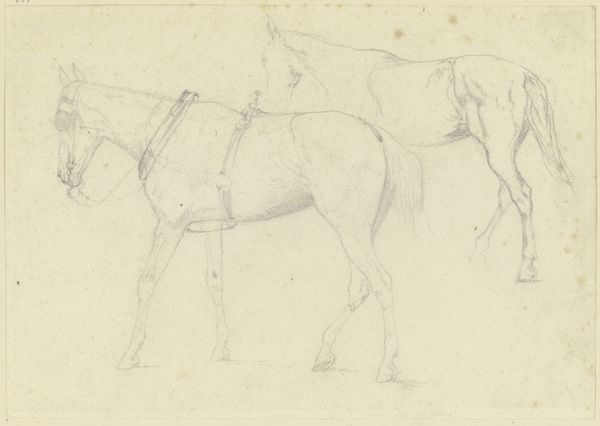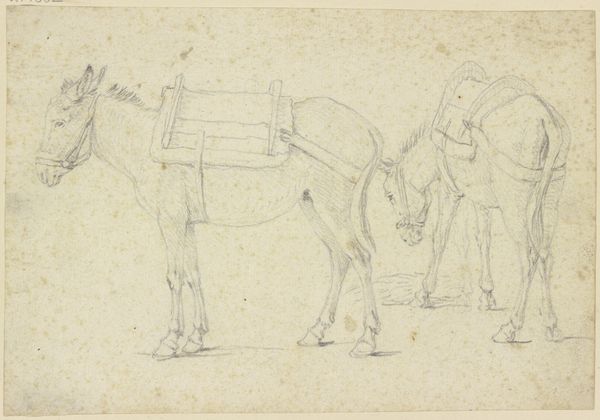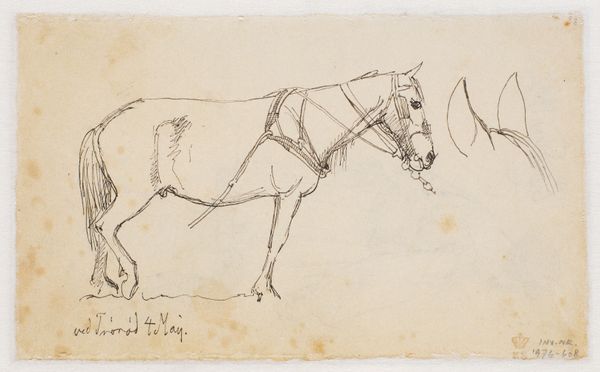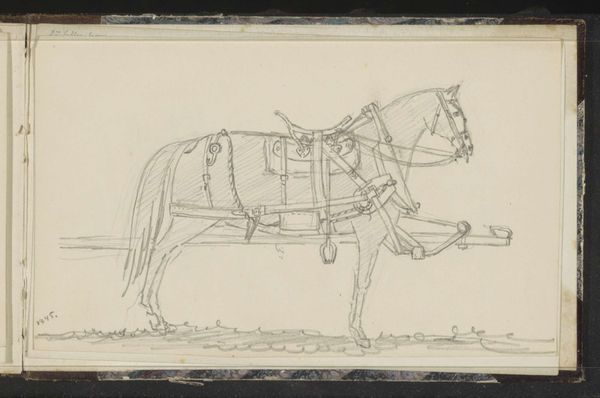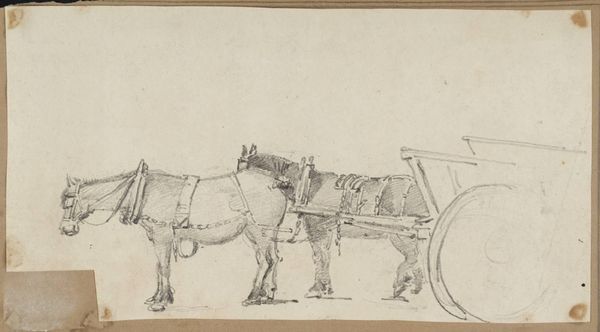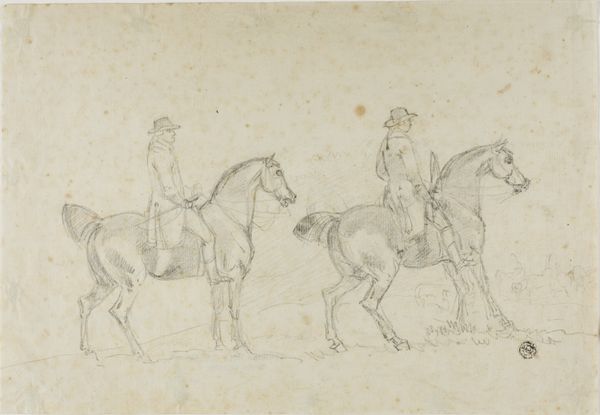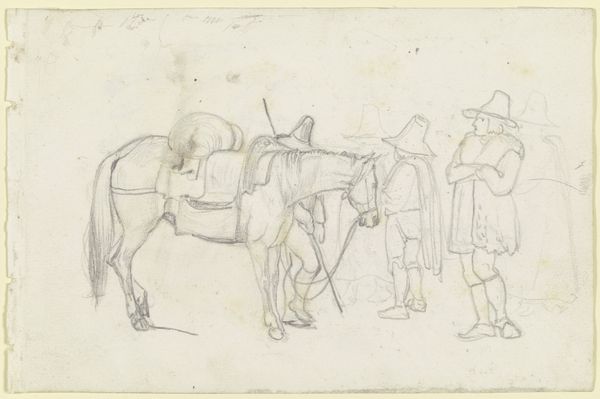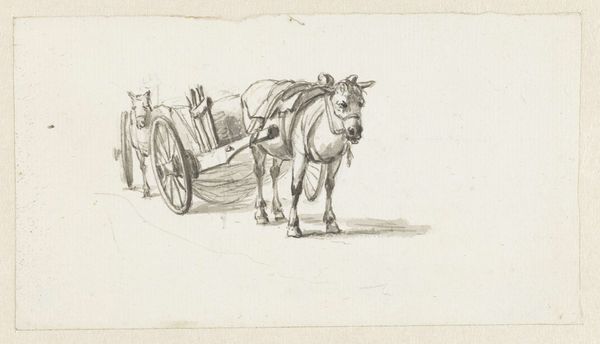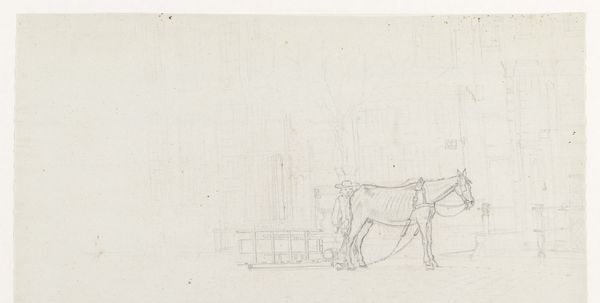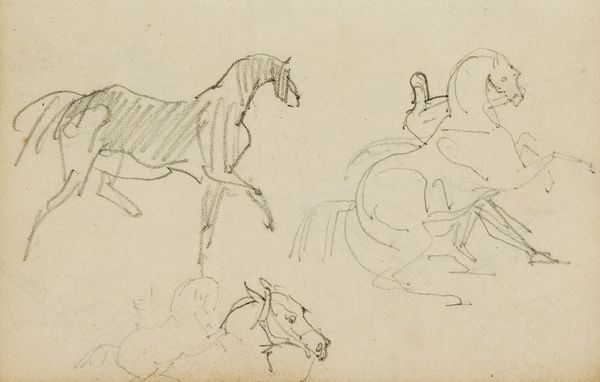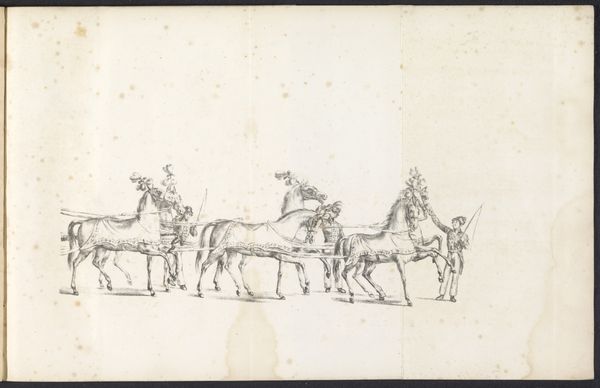
Two Horse Team with Driver, Pulling Carriage (recto); Sketches of Women Bending Over (verso) n.d.
0:00
0:00
drawing, print, paper, pencil, graphite
#
drawing
# print
#
pencil sketch
#
landscape
#
paper
#
pencil
#
graphite
#
realism
Dimensions: 227 × 463 mm
Copyright: Public Domain
Editor: This drawing, "Two Horse Team with Driver, Pulling Carriage" by David Teniers the Younger, seems so immediate, doesn't it? The pencil lines are light, almost tentative, yet they capture the weight and energy of the horses. It's a working scene. What do you see in this piece? Curator: It’s precisely that feeling of immediacy that captures me as well. Beyond the representation of labor, consider the horse itself. It is a symbol of power, yes, but also of subservience, of harnessed energy. How much of our understanding of societal structure, even our emotional response to images of authority, has been shaped by such common visual representations of burden? Editor: That's a compelling thought. I was mainly drawn to the simplicity of the lines, but you're suggesting there's a deeper layer connected to how we perceive power dynamics. Curator: Absolutely. The repetition of such imagery throughout history—horses pulling carriages, beasts of burden depicted in art, tapestries, even decorative objects—continually reinforces cultural narratives. Isn't it interesting how deeply ingrained these visual metaphors become in our collective consciousness? Think, for example, about how language itself borrows from this symbolism; how often do we use terms like 'horsepower' or discuss ‘carrying the weight’ of something? Editor: I never thought about it like that before. So, you're saying even seemingly simple sketches like this one are contributing to this visual language of power and labour that's embedded in our culture? Curator: Exactly! And recognizing those underlying symbols empowers us to see beyond the surface of the art and towards understanding a richer narrative. It’s a constant dialogue between the image and our own culturally constructed perception. Editor: Wow, I’ll definitely look at similar drawings with a fresh perspective now. Thanks! Curator: My pleasure. The best art always gives us new ways of seeing.
Comments
No comments
Be the first to comment and join the conversation on the ultimate creative platform.
